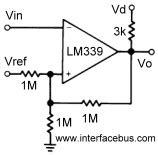Introduction to Opamp Hysteresis
Operational amplifiers, or opamps, are one of the most versatile and widely used electronic components in circuit design. They have a variety of applications, from signal conditioning and filtering to voltage regulation and oscillator circuits. One important characteristic of opamps is their ability to exhibit hysteresis, which can be leveraged to create stable, noise-resistant circuits.
In this ultimate guide, we will dive deep into the concept of opamp hysteresis, exploring its principles, applications, and design considerations. Whether you are an electronics hobbyist, a student, or a professional engineer, this article will provide you with a comprehensive understanding of opamp hysteresis and how to effectively utilize it in your projects.
What is Hysteresis?
Before delving into opamp hysteresis specifically, let’s first understand what hysteresis is in general. Hysteresis is a phenomenon where the output of a system depends not only on the current input but also on the system’s previous state. In other words, the output exhibits a “memory” effect, where it retains its state even after the input has changed.
Hysteresis is commonly visualized using a hysteresis loop, which shows the relationship between the input and output of a system. The loop has two distinct paths: one for increasing input and another for decreasing input. The difference between the two paths represents the hysteresis band or the dead zone.
Real-world Examples of Hysteresis
Hysteresis is not limited to electronic circuits; it can be observed in various real-world systems. Some common examples include:
-
Thermostats: A thermostat with hysteresis maintains the temperature within a specific range by turning the heating or cooling system on and off at different setpoints. This prevents rapid oscillations and ensures a stable temperature.
-
Mechanical switches: Switches with hysteresis require different levels of force to activate and deactivate, preventing unwanted toggling due to vibrations or noise.
-
Magnetic materials: Ferromagnetic materials exhibit hysteresis in their magnetization curves, where the magnetic field intensity depends on the material’s previous magnetization state.
Opamp Hysteresis: Principles and Circuit Configuration
Now that we have a basic understanding of hysteresis let’s explore how it applies to operational amplifiers.
Opamp as a Comparator
To understand opamp hysteresis, we first need to consider the opamp’s role as a comparator. In a comparator configuration, the opamp compares the voltage at its non-inverting input (V+) with the voltage at its inverting input (V-). If V+ is greater than V-, the opamp’s output will be high (usually close to the positive supply voltage). If V+ is less than V-, the output will be low (usually close to the negative supply voltage or ground).
Adding Hysteresis to the Comparator
Hysteresis is introduced to the comparator circuit by adding a feedback resistor between the opamp’s output and one of its inputs, typically the non-inverting input. This feedback creates two different threshold voltages: an upper threshold (V


No responses yet